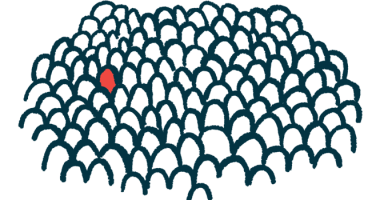Rare case of HAE type 1 with stroke-like symptoms: Report
Man, 39, found to have new disease-causing mutation in SERPING1 gene

In a 39-year-old man in France, hereditary angioedema (HAE) manifested with stroke-like symptoms, including weakness on one side of the body and difficulty speaking, despite treatment with danazol, a medication normally used to prevent HAE attacks.
His symptoms eventually resolved with Takhzyro (lanadelumab), an approved therapy for HAE, with follow-up genetic tests revealing the presence of a new mutation in the SERPING1 gene that was deemed likely disease-causing.
His case was described in the study “Stroke-like manifestations of angioedema: A case report and the identification of a novel mutation,” which was published as a letter to the editor in the journal Revue Neurologique.
HAE type 1 caused by mutations in SERPING1 gene
HAE is a form of angioedema caused by genetic mutations. The most common form of HAE, type 1, is caused by mutations in the SERPING1 gene, which provides instructions for making a protein called C1 inhibitor, or C1-INH.
In HAE type 1, these mutations impair the production of C1-INH, causing its levels to drop too low. This in turn can lead to swelling attacks that usually appear on their own, without hives or a rash.
Neurological involvement in HAE is rare, with few studies reporting stroke-like symptoms.
In the article, physicians in France described the case of a man with HAE type 1 that presented with stroke-like symptoms.
The man was admitted to the hospital after experiencing a series of short episodes of hemiparesis (weakness on one side of the body) and difficulty speaking in the course of a single day. He had been diagnosed with HAE type 1, for which he was being treated with danazol.
His clinical history included drug-induced hyperlipidemia (high levels of fatty molecules in the blood) and high blood pressure, for which he was also being medicated, and smoking.
In the days before his stroke-like symptoms, he had experienced acute symptoms of HAE that required treatment with Firazyr (icatibant), an approved on-demand treatment for the condition.
MRI scans performed during hemiparesis revealed an abnormality in a brain region called the caudate nucleus, which is responsible for processing visual information, movement, and memory.
No blockade or narrowing was detected in large blood vessels, and tests on the patient’s blood and cerebrospinal fluid (the liquid that bathes the brain and spinal cord) came back normal.
During follow-up, there were no transient attacks and, according to current guidelines, the patient was treated assuming he had experienced an ischemic stroke, which occurs when a vessel supplying blood to the brain becomes obstructed.
Physicians suspect patient had cerebral angioedema
However, an MRI scan performed three months later showed no signs of blood vessel blockage. This led physicians to reconsider their initial diagnosis and suspect this was a case of cerebral angioedema, in which swelling attacks affect the brain.
The patient received treatment with Takhzyro, since danazol was effective at controlling his symptoms. No episodes were reported during the 48 months, or four years, of follow-up.
Genetic testing revealed the patient had a novel mutation in the SERPING1 gene, which was classified as likely disease-causing, or pathogenic. The same mutation was present in his father and in his daughter.
“The case of cerebral C1-INH-HAE presented here is the second known to date,” the researchers wrote.
“The first case featured 16 stroke-mimicking attacks,” they wrote, noting repeated attacks are usually not seen in other disorders, pointing to the differential diagnosis of HAE.








